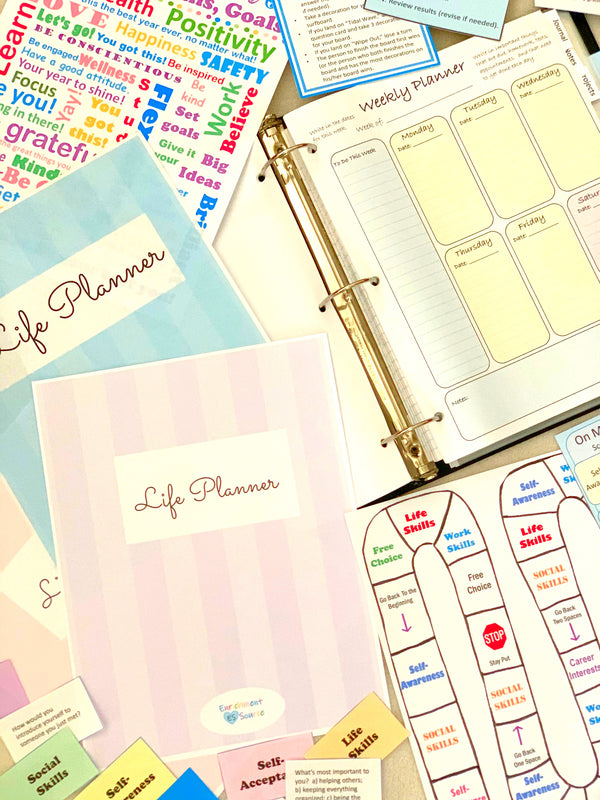August 23, 2020
As our kids head back to school this year, many will be heading to the home office, kitchen, dining room, or some other area of the house. Most of us had a taste of that for last few months of last school year, but many people didn't expect that it would continue into the fall. It's a different experience to begin the school year remotely.
For many parents and kids, learning from home – distance learning, remote learning, virtual learning, homeschooling – is a new and unfamiliar concept. Here are some ideas for making the most it, and setting your child up for success.
Distance Learning Tips and Pointers for Parents
Here are some tips and ideas for making distance learning a positive, productive, successful experience for you and your child/ren.
Setting the Stage for Distance Learning Success
Have clear and reasonable expectations, and make sure your child (or children) is/are aware of them. Write these expectations down, if needed, and make them accessible. One way to start is by establishing “school” rules. Just like in physical classrooms, children need to know what the rules are, the boundaries and limits. Treat it like school - because it is school. It just happens to take place at home.
Home School Rules
Establish some distance learning “classroom” rules and post them. Have your child participate in creating the rules and review them together. Decide on the most important rules that you feel will enhance the learning experience. Write these rules down and display them. You may also want to review the rules with your child/ren on a regular basis. Choose how you wish to enforce the rules, starting with gentle reminders and pointing to your rule chart. You may also consider some type of reward and/or consequence system.
Environment/Learning Space
Where the learning takes place plays an important role in the learning process. Choose the best spot in the house (or wherever else the learning is going to happen). It should be as distraction free as possible. Factors to consider include the following: comfort, lighting, noise level, internet availability. Make sure your child/ren has/have a comfortable chair, a table/desk space, room to spread out, and access to an electrical outlet, Wifi, and anything else they will need. Keep the space organized so all their materials/supplies are accessible and easy to find. Use bins/containers/boxes (which you might also wish to label) to hold supplies and materials.
Be Prepared
Make sure you have all the information you need for implementing distance learning. This may include:
Routine
Routine is crucial in any school situation. It provides guidance and makes expectations clear. Once you have class schedules and requirements, you can establish a routine for your child/children/family. Create a visual representation of the routine (and/or of each child’s routine) and post it in a place where they can access it. With this routine, create a schedule.
Schedule
Post schedules where they can be seen; keep an additional copy in each child’s notebook. When creating a schedule, consider all the things that must get done each day, and list them in chronological order (include time frames in these). In addition to including the school/class schedule, you may also want to include before and after school activities.
Student Planner Notebook
Make each child his/her own binder/organizer/planner (with tabbed sections, folder pockets, extra paper, plastic sleeves, etc.). Put everything in this notebook – schedules, class information, calendars, planner pages, homework, website login information, contacts, project information, etc. Organize into sections, using tabbed divider. This will be their go-to information center. Let your child help to put the notebook together, and then go over it with them (to help them to become familiar with it). It will help them to be organized. Get our downloadable printable student distance learning planner here.
Parent Distance Learning Planner Notebook
It’s also a great idea to create and keep a notebook of your own, as you will be involved in some way in your child’s learning. The level of involvement will vary depending on your child’s age. You may be doing a lot of the teaching yourself (most/all of it if you are homeschooling), or coaching, co-teaching, facilitating. Keep a copy of all technology login information, teacher contact, class schedules, calendars, as well as homework and projects. See our parent distance learning and homeschooling planner.
Get a student and parent distance learning planning bundle here.
Check-In with Your Child
Do a daily check-in (before class). Ask questions such as the following:
Other Tips

Join Our Mailing List
Be the first to learn about specials and other new! Join our email list!
